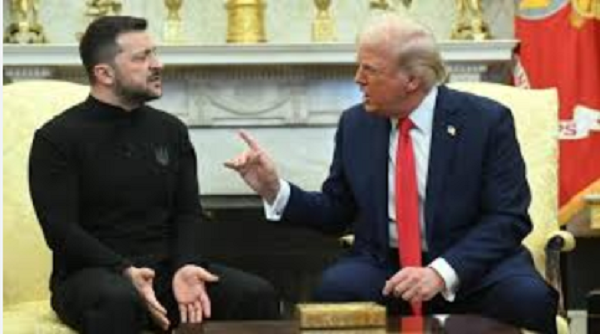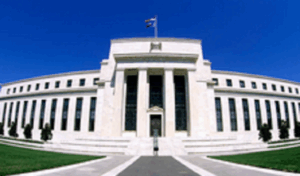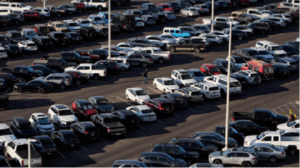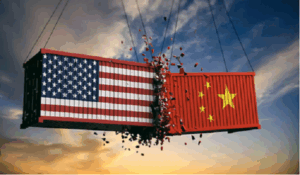Trump chastises Zelensky for refusing to recognize Russia’s control of Crimea
U.S. President Donald Trump’s attempts to forge a peace deal between Russia and Ukraine appeared to be foundering Wednesday as he launched another broadside against Ukrainian President Volodymyr Zelensky.
Earlier in the day, his administration warned that Mr. Trump would soon give up on the effort if the two sides didn’t agree to terms.
Signalling how distant a deal remains, a Wednesday summit in London between Ukraine and its key allies was downgraded at the last minute when U.S. Secretary of State Marco Rubio and Mr. Trump’s emissary Steve Witkoff announced they would not be attending – just hours after Mr. Zelensky spoke dismissively of a leaked peace plan labelled Mr. Trump’s “final offer.”
In particular, Mr. Zelensky was opposed to a clause that would see the U.S. recognize Russia’s 2014 annexation of Crimea, which was illegal under international law.
Mr. Trump, in a Wednesday posting to his Truth Social network, called Mr. Zelensky’s position “very harmful to the Peace Negotiations with Russia.”
“Crimea was lost years ago … and is not even a point of discussion,” Mr. Trump wrote. “Nobody is asking Zelensky to recognize Crimea as Russian Territory but, if he wants Crimea, why didn’t they fight for it eleven years ago when it was handed over to Russia without a shot being fired?”
Mr. Trump, who has ignored invitations from Mr. Zelensky to visit Ukraine and see the situation for himself, called Ukraine’s battlefield situation “dire” and said Mr. Zelensky “can have Peace or, he can fight for another three years before losing the whole Country.”
Earlier Wednesday, Vice-President JD Vance said the U.S. had put forward a “very explicit proposal” to end the war and that it was time for the two sides to either accept or reject them.
“It’s time for them to either say yes or for the United States to walk away from this process,” Mr. Vance said during a visit to India. Without commenting on the media leaks, he laid out – not for the first time – a vision that would see the three-year-old war frozen along its current front lines.
“We’re going to freeze the territorial lines at some level close to where they are today,” he said. “That means the Ukrainians and the Russians are both going to have to give up some of the territory they currently own. There’s going to have to be some territorial swaps.”
According to the Financial Times and Axios, the one-page peace proposal that’s being circulated would leave Russia in control of about 20 per cent of Ukrainian territory, land it has seized since its 2022 invasion.
The United States would legally recognize Russia’s 2014 annexation of Crimea while extending de facto recognition to Russia’s hold over areas of the southern and southeastern Donetsk, Luhansk, Kherson and Zaporizhzhia regions that have been captured over the past three years.
Russia would also receive a guarantee that Ukraine would never join the NATO military alliance, satisfying a long-standing Kremlin demand, as well as the lifting of U.S. sanctions imposed on Moscow since 2014.
The flurry of diplomacy in recent days appears aimed at reaching some kind of agreement before Mr. Trump loses interest in the process. On Friday, Mr. Rubio warned that the U.S. was ready to abandon its peace push within “a matter of days” if the two sides couldn’t come to an agreement.
Kremlin spokesman Dmitry Peskov said the London meeting had been cancelled because the U.S., Europe and Ukraine “have been unable to align their positions on some issues.” Russian representatives were not invited to the London talks, though Russian President Vladimir Putin’s envoys have previously met with Mr. Witkoff and Mr. Rubio in Saudi Arabia. Mr. Witkoff has also made several trips to Moscow and is expected to travel there again later this week.
Olena Halushka, co-founder of the International Centre for Ukrainian Victory, a civil society group that has warned against appeasing Russian aggression, said the reported proposal was not the basis for a lasting peace.
“The plan outlined in the media is not actually a peace plan. It foresees no concessions on the side of Russia and plenty by Ukraine,” she said, adding that the plan to lift sanctions on Russia was especially worrying, since it could allow Moscow to reclaim frozen assets that could be used to finance a renewed attack on Ukraine.
Ukraine, for its part, would receive a “robust security guarantee” involving European countries, as well as some non-European ones, though the document reportedly does not mention U.S. participation.
Ukraine would also receive unspecified reconstruction help, as well as the return of the small parts of the eastern Kharkiv region currently under Russian occupation.
The proposal would also see the U.S. take control of the Zaporizhzhia Nuclear Power Plant, which is in a Russian-occupied area close to the front line, and use it to provide power to both Ukraine and Russia.
The reported plan got a cool reception in Kyiv. Mr. Zelensky dismissed the proposal as unworkable because Ukraine’s constitution makes it illegal for any president to agree to territorial concessions. “There is nothing to talk about,” he said at a Tuesday night news conference in Kyiv. “This violates our constitution. This is our territory, the territory of the people of Ukraine.”
Tymofiy Mylovanov, the president of the Kyiv School of Economics and a former adviser to Mr. Zelensky’s office, said the President’s sharp reaction suggested the Trump team’s real offer was even more heavily tilted in Moscow’s favour than what has been reported in the media.
“I have seen something similar with the mineral deal,” he said, referring to Mr. Trump’s push to get Ukraine to sign over billions of dollars’ worth of rare earth minerals as compensation for U.S. military support. “Publicly, the U.S. leaks one kind of deal, privately what I saw on paper was very different.”
Ukrainian Prime Minister Denys Shmyhal arrived in Washington Wednesday for “technical discussions” aimed at establishing a fund for rebuilding Ukraine. The U.S. side, headed by Treasury Secretary Scott Bessent, is expected to seek wide access to Ukraine’s natural resources as part of any deal.
Mr. Zelensky said Ukraine is not opposed to any talks that might lead to “real peace.” Posting on his Telegram channel, he called for “an immediate, complete and unconditional” 30-day ceasefire as a starting point.
A Ukrainian delegation – headed by Mr. Zelensky’s chief of staff, Andriy Yermak, as well as Foreign Affairs Minister Andrii Sybiha and Defence Minister Rustem Umerov – travelled to London Wednesday despite the absence of Mr. Rubio and Mr. Witkoff. The French and German foreign affairs ministers, who were also supposed to attend the summit, cancelled their own trips after it was announced that Mr. Rubio would not attend.
British Foreign Secretary David Lammy and Defence Secretary John Healey met with their Ukrainian counterparts, as well as with Keith Kellogg, Mr. Trump’s formal envoy to Ukraine, whose role has largely been usurped by Mr. Witkoff.
“Despite everything, we continue working for peace,” Mr. Yermak posted on social media.
Mr. Putin declared a 36-hour ceasefire over Easter that Mr. Zelensky said saw a “decrease in the intensity of hostilities,” though not a complete halt. Large-scale fighting has since resumed, and eight women and one man were killed Wednesday morning when a Russian drone struck a civilian bus in Ukraine’s central Dnipropetrovsk region.
This article was first reported by The Globe and Mail














